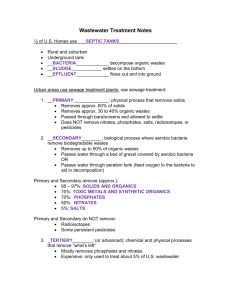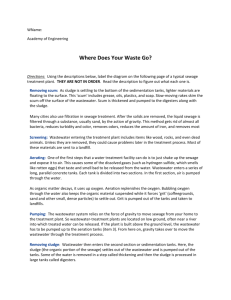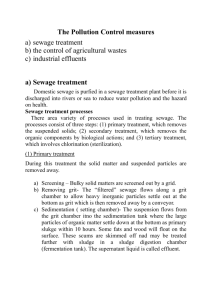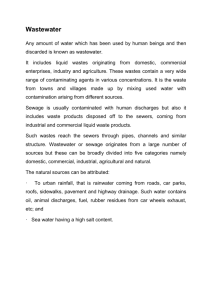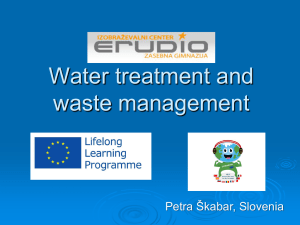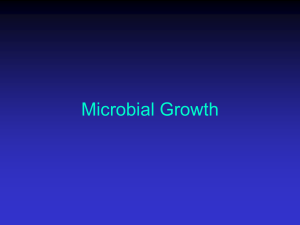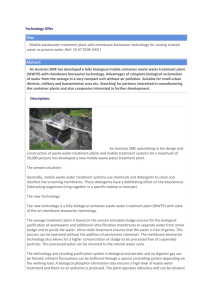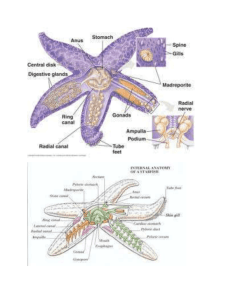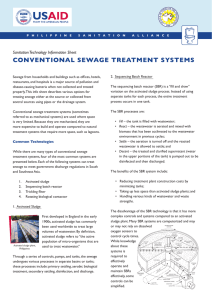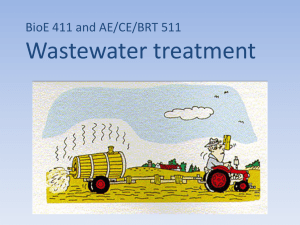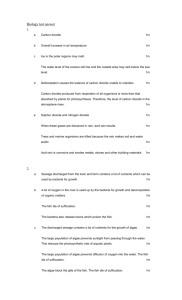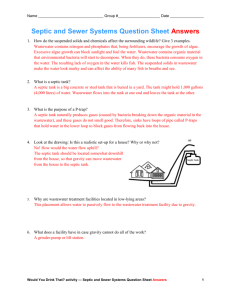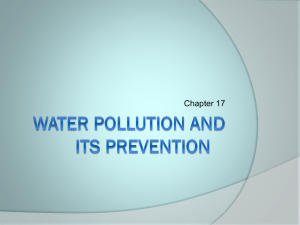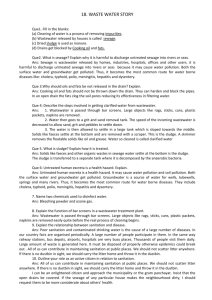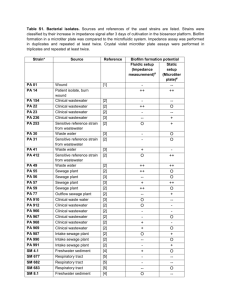Water Treatment
advertisement
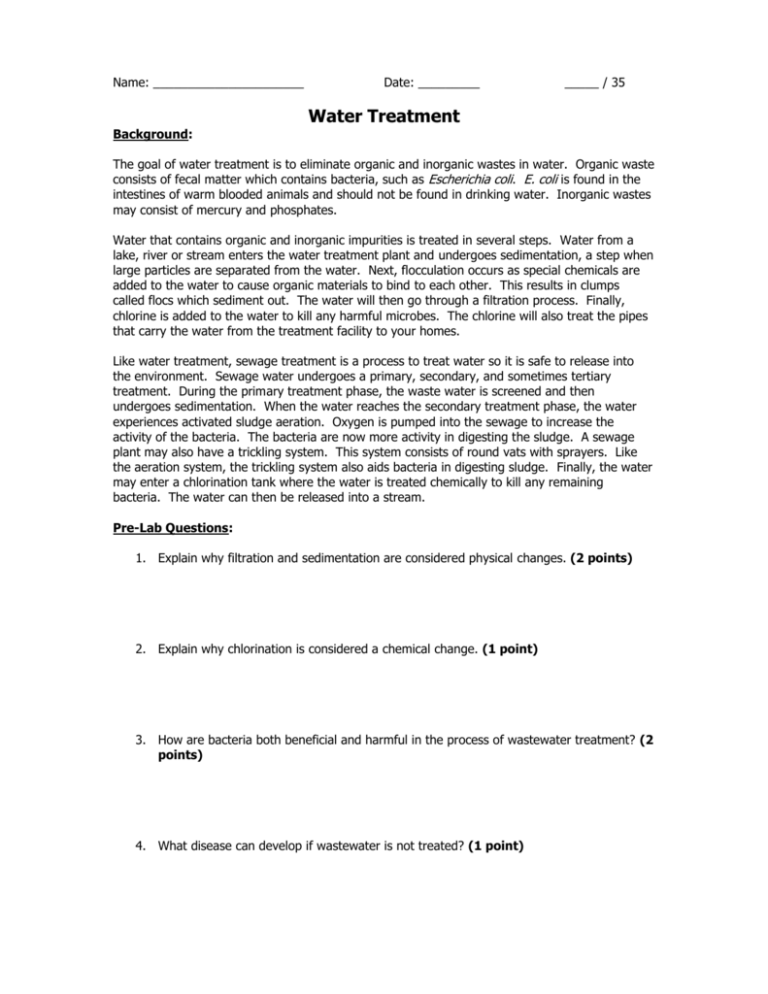
Name: ______________________ Date: _________ _____ / 35 Water Treatment Background: The goal of water treatment is to eliminate organic and inorganic wastes in water. Organic waste consists of fecal matter which contains bacteria, such as Escherichia coli. E. coli is found in the intestines of warm blooded animals and should not be found in drinking water. Inorganic wastes may consist of mercury and phosphates. Water that contains organic and inorganic impurities is treated in several steps. Water from a lake, river or stream enters the water treatment plant and undergoes sedimentation, a step when large particles are separated from the water. Next, flocculation occurs as special chemicals are added to the water to cause organic materials to bind to each other. This results in clumps called flocs which sediment out. The water will then go through a filtration process. Finally, chlorine is added to the water to kill any harmful microbes. The chlorine will also treat the pipes that carry the water from the treatment facility to your homes. Like water treatment, sewage treatment is a process to treat water so it is safe to release into the environment. Sewage water undergoes a primary, secondary, and sometimes tertiary treatment. During the primary treatment phase, the waste water is screened and then undergoes sedimentation. When the water reaches the secondary treatment phase, the water experiences activated sludge aeration. Oxygen is pumped into the sewage to increase the activity of the bacteria. The bacteria are now more activity in digesting the sludge. A sewage plant may also have a trickling system. This system consists of round vats with sprayers. Like the aeration system, the trickling system also aids bacteria in digesting sludge. Finally, the water may enter a chlorination tank where the water is treated chemically to kill any remaining bacteria. The water can then be released into a stream. Pre-Lab Questions: 1. Explain why filtration and sedimentation are considered physical changes. (2 points) 2. Explain why chlorination is considered a chemical change. (1 point) 3. How are bacteria both beneficial and harmful in the process of wastewater treatment? (2 points) 4. What disease can develop if wastewater is not treated? (1 point) Objective: With the materials your teacher provides you, you will design an efficient water treatment process to clean a sample of wastewater. In order for your cleaned water to be safely released into the environment, it must meet the EPA requirements. Therefore, you will have to consider both physical and chemical changes while creating your treatment process. Wastewater: - water soil paper plastic vinegar oil pond water (microorganisms) Treatment Materials: - brown paper towel white paper towel paper coffee filter beakers cheese cloth baking soda bleach soap Procedure: Complete the data table for each step that you take to clean your wastewater sample. 1. What treatment material did you use? 2. What waste material did this treatment method remove? 3. Describe what your water looked like after completing this step. 4. What treatment process did you simulate (sedimentation, filtration, chlorination, etc)? 5. Was this a physical or chemical treatment? Data Table: (15 points) Material What removed? Observations Treatment Process Physical/ Chemical Analysis/Conclusion: 1. Identify the followings wastes as organic or inorganic: (3 points) Soil Paper Plastic Vinegar Oil pond water (microorganisms) 2. Why is it important to remove solid wastes from water? (1 point) 3. Why is it important to kill microorganisms from the water? (1 point) 4. What was the most effective treatment method? Why? (2 point) 5. What was the least effective treatment method? Why? (2 points) 6. Did your water meet EPA standards? If so, explain why your procedure was successful. If not, explain how you could modify your process to achieve a better result. (5 points)
